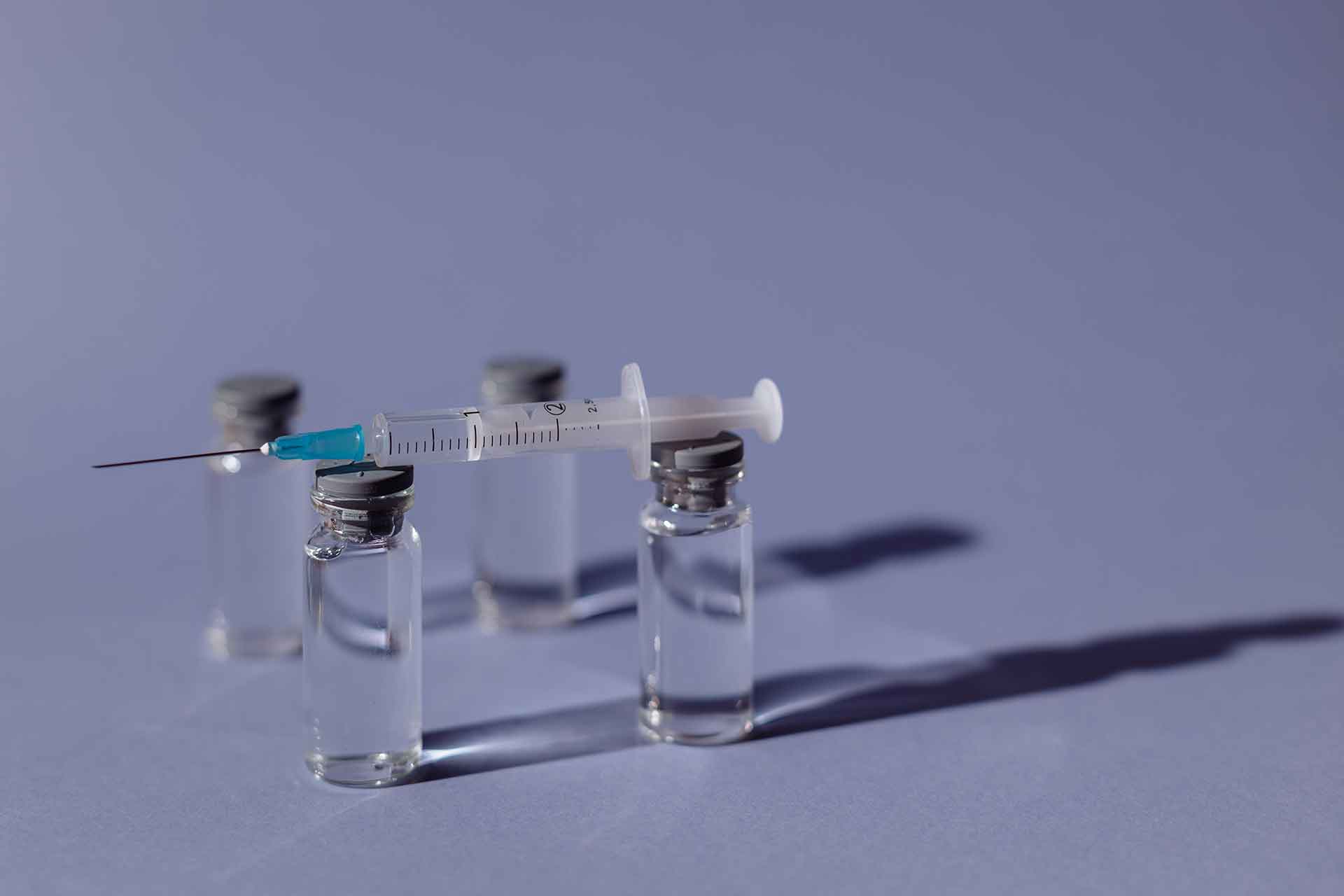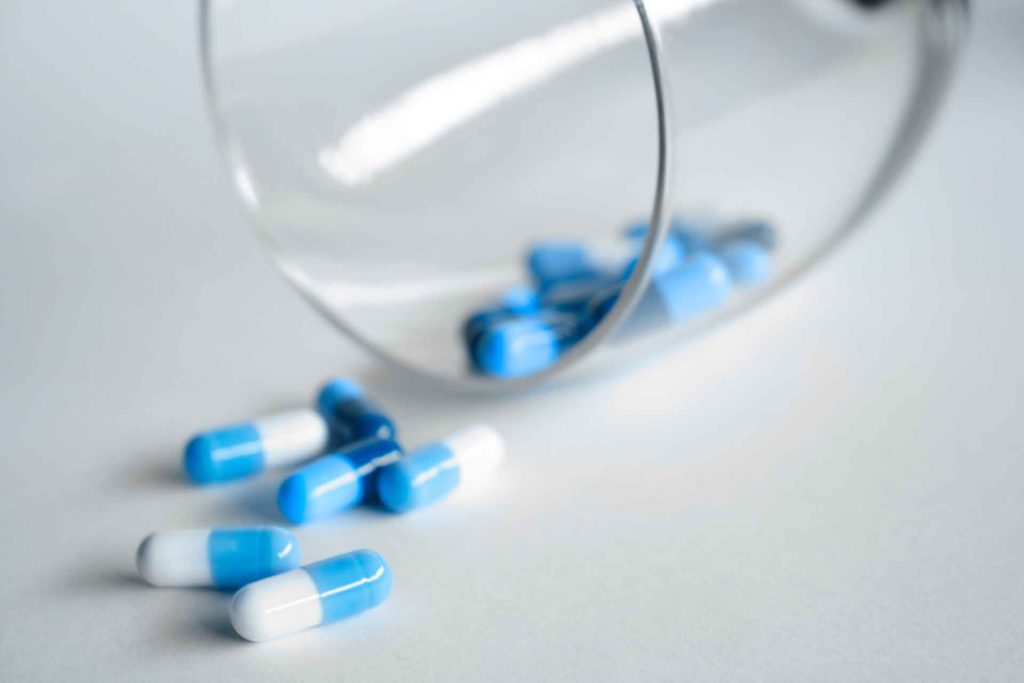Depression affects a large number of people. (1) Getting the appropriate solution, especially when you are struggling with additional mental health issues, maybe a lengthy and challenging journey.
When contemplating treatment alternatives, consulting with a medical or mental health expert is essential. Moreover, certain medications are also known to be effective for depression, with their advantages and cons.
The stimulant Adderall is one of them. Adderall is not the perfect treatment option for depression and, it has been associated with depression for a variety of reasons, both as an off-label medication and a cause of depression.
What is Adderall?
Adderall is a stimulant that combines the effects of amphetamine and dextroamphetamine. It alters brain and nerve chemicals that lead to hyperactivity and impulse control.
It can be used to treat narcolepsy and attention deficit hyperactivity disorder (ADHD). (2) It is frequently utilized as a part of a therapy strategy that includes psychiatric, educational, and social interventions. (3)
Adderall is not an FDA-approved depression therapy. Adderall should be used with caution in patients who have a combination of mental health problems, such as ADHD and bipolar disorder, according to the FDA.
Patients with underlying mental health issues, such as psychosis, mania, high-functioning anxiety, acute stress disorder, or major depressive disorders such as melancholic depression, should seek medical advice before using Adderall.
Adderall Abuse and Overdose

Adderall can be abused when it is used without a medical purpose, for recreational activities, when the dosage is exceeded beyond what is recommended, or when the medication is altered to be used in a way that is not approved. (4)
Adderall is classified as Schedule II by the Drug Enforcement Administration because it has a significant potential for misuse, diversion, and addiction, although it has valid medicinal applications. A
ny form of Adderall abuse can be hazardous. According to the Drug Abuse Warning Network, over 17,000 patients sought emergency care in 2011 after experiencing a negative reaction to an amphetamine-dextroamphetamine prescription. (5)
Overdose, which can result in coma, brain damage, or even death, is one of the primary risks of snorting or misusing Adderall. The stimulant nature of the amphetamine in Adderall causes changes in brain chemistry linked to pleasure, hunger, sleep patterns, energy expenditure, cognitive abilities, raising heart rate, blood pressure, body temperature, and respiration rates. (7)
Adderall can help individuals focus, fight hyperactivity, and balance some of the brain’s chemicals that are adversely impacted by ADHD when taken for medicinal purposes and used as directed.
However, in case of overdose or abuse, the functions of the central nervous system can be elevated to lethal limits.
How to Spot Adderall Abuse?
According to the National Survey on Medication Use and Health, over 1.5 million Americans aged 12 and older misused a prescription stimulant drug like Adderall at the surveyor’s time in the month preceding it in 2013. (8)
Adderall use is usually associated with the following, which may be detected right away:
- Prescription bottles in personal possessions, even if the drugs are not required for medical purposes.
- Using up Adderall prescriptions faster than needed.
- Powder on the clothing, the face, or the area around the nose and mouth.
- Tools for cutting or crushing drugs.
- Mood fluctuations range from ecstatic, concentrated, and productive to sad, aggressive, and frightened.
- Extreme weight loss and abnormal changes in appetite.
- Declining physical appearance.
- Dropping grades or having problems at work are also possible outcomes.
- Spending the amount on Adderall might put you in a financial bind.
- Despite unfavorable effects, increased risky conduct and drug usage.
- Lack of interest or engagement in non-Adderall-related activities.
- Isolation or retreat from social situations, as well as difficulties in intimate relationships.
- Possibilities of encounters with police enforcement or legal issues.
- Ineffectiveness and a failure to fulfill commitments constantly.
- Drastic shifts in sleeping patterns, with intervals of being awake for lengthy amounts of time followed by hours or more of laying on the bed.
Adderall misuse can result in a life-threatening overdose and other health complications.
The Link Between Depression and Adderall
To cope with destructive emotions and experiences, many people suffering from depression turn to the pharmaceutical stimulant Adderall. Although, Adderall and depression are not a perfect match.
Adderall for depression might cause depressed emotions in some people. In any case, there are two of the following concerns relating to depression and Adderall.
Can Adderall Cause Depression?

Adderall and depression have a strong link. Depression has an impact on how a person believes, behaves, and performs. According to the Child Mind Institute, a child with attention deficit hyperactivity disorder (ADHD) who gets a high dose of Adderall may display depression or lethargic behaviors. (9)
According to the same organization, around 5% of children who are prescribed Adderall develop depression after taking the stimulant at recommended levels. When you stop using Adderall, you might get rid of the depression.
Moreover, as Adderall is classified as a stimulant, it may be misused in an addiction pattern similar to that seen with more potent stimulant substances like methamphetamine or cocaine.
When you stop bingeing for a lengthy period, you will suffer a crash, which includes devastating symptoms like severe depression. Consequently, it will lead to a vicious cycle of Adderall misuse.
It is because when Adderall is misused, the brain generates an excessive amount of dopamine. To maintain internal stability, the brain attempts to overcompensate by removing dopamine receptors. (10)
As the number of dopamine receptors in the brain reduces, an Adderall user will need more of the drug to feel the exhilaration it previously did, and users experience symptoms of depression after the substance has left their bodies.
Abusers of the substance do so for a variety of reasons. Some people claim to use it to boost their job or sports performance, while others claim to take it for weight reduction or pleasure. Whatever the cause, these tendencies lead to addiction, which is worsened by depression and hopelessness.
Is Adderall Effective for Depression?
According to research published in the journal Dialogues in Clinical Neuroscience, taking both antidepressants and psychostimulants like Adderall decreased symptoms of depression. (11)
However, the FDA has not authorized Adderall as a therapy for depression as of 2018, and it cautions that Adderall can lead to depression.
Anecdotal and out-of-date research supports Adderall’s efficacy as a depression therapy. (12) Rather than treating depression, Adderall and other prescription stimulants are used to treat ADHD. People can speak with a medical expert about suitable depression medications.
Self-medicating with Adderall to alleviate depressive symptoms can increase tolerance to the medication. People with a higher tolerance for medication may want to take more of it to experience its efficacy.
However, those treating depression with Adderall are bound to consume it in recommended doses. Individual factors influence the quantity of Adderall that should be taken.
Adderall does for persons with depression is influenced by several factors, including the presence of other mental health problems, such as anxiety, and a person’s history of using prescription stimulants.
The Effects of Long-Term Adderall Use on the Brain
Stimulants improve concentration and energy levels while reducing the need for sleep and suppressing hunger. Several neurotransmitters, including serotonin, norepinephrine, and notably dopamine, are stimulated by Adderall.
Over time, variations in dopamine activity can influence our brain’s reward system, affecting our ability to feel pleasure without the chemical support of continuing amphetamine usage.
These alterations become more entrenched the more Adderall is used. Tolerance to the medication may develop, requiring more Adderall at each dose to get the same intended benefits.
Moreover, withdrawal symptoms and drug cravings may develop when Adderall exits the circulation, indicating a physical and emotional dependency on the medication. The method Adderall is misused, as well as the amount and period of abuse, can have an impact on the drug’s dependency level.
Crushing the pills and injecting or inhaling them, for example, delivers the medication to the brain faster than swallowing them whole and allowing them to enter the circulation through the digestive tract.
As a result, injecting or snorting crushed drugs raises the risk of a life-threatening overdose as well as the possibility of addiction. (13)
Addiction is a disease that influences each person differently, and genetic and environmental variables may play a role in how quickly it develops.
When Adderall is withdrawn from the body, someone addicted to it may have problems sleeping and focusing, notice a loss of motivation, and feel sad, irritated, sluggish, or tired. Amphetamine abuse can lead to aggressiveness and suicidal thoughts. (14)
The emotional element of withdrawal may be the most prominent adverse effect for someone who has been taking Adderall for a long time. Natural dopamine production is decreased, resulting in poor emotions and difficulty feeling satisfaction without consuming the drug.
Physical Side-effects of Adderall

People who abuse Adderall for an extended period may have a variety of adverse effects on their overall wellbeing. (15)
Adderall boosts blood pressure, body temperature, and pulse rate, keeping users awake and alert while lowering hunger. Regular use or abuse of Adderall can cause changes in the brain’s structure and affect how emotions are managed.
Moreover, heart muscles, lungs, vascular system, and other internal organs might all be affected.
Since Adderall elevates blood pressure and heart rate, it can harm or impair areas of the cardiovascular system in the body, including the heart, lungs, arteries, and veins, over time.
Because of the drug’s interaction with the body, these essential organs and arteries are pushed to work harder and may get stressed with long-term usage. (16)
Hypertension (high blood pressure) (17) and tachycardia (elevated heart rate) are typical side effects. Adderall usage can also potentially harm the lungs, resulting in decreased lung capacity, breathing difficulties, and the possibility of pulmonary illness.
Chest discomfort and heart palpitations are all possible side effects of Adderall use.
Adderall slows the muscles in the digestive tract, which can cause constipation, abdominal discomfort, and other gastrointestinal problems. (18)
As Adderall suppresses appetite, it is possible to have accidental anorexia or harmful weight loss while taking medication. It can also harm the kidneys and other organs, perhaps leading to renal failure. (19)
However, Adderall is not usually taken as intended, and nonmedical usage raises the chances of a dire consequence. When Adderall is used with other medications or alcohol, the chance of dangerous side effects increases. For example, alcohol is a central nervous system depressant, whereas Adderall stimulates it.
Consequently, Adderall may keep a person alert and may turn off internal signs that warn the body when it has drank enough alcohol, causing them to drink more. When alcohol reaches dangerous amounts in the circulation, this can lead to alcohol poisoning. (20)
Consequences of Adderall Withdrawal
People who use high dosages of Adderall for prolonged periods risk becoming physically addicted to the medication. As a result, tolerance develops, requiring bigger and more frequent dosages to get the same benefits as previously.
Those who have developed a tolerance to Adderall may notice that the medicine no longer aids them in concentrating or increasing their energy levels as effectively as it previously did. They cannot focus or perform typically if they stop taking the medication.
This is the beginning of the withdrawal process. Withdrawal is generally only experienced by people who took heavy dosages, often over a long time.
Withdrawal symptoms from Adderall are, predictably, the absolute opposite of the drug’s effects.
While Adderall improves focus, exhilaration, and energy, the crash that occurs when a person stops taking it reverses these gains. These symptoms get more severe in people with having a higher tolerance for Adderall.
Among the most common withdrawal symptoms are:
- Depression.
- Irritability.
- Headaches.
- Hypersomnia.
- Insomnia.
- Appetite increase.
- Fatigue.
- Hallucinations.
- Difficulty in concentration.
- Achiness.
- Anxiety.
- Suicidal thoughts and self-harming behavior.
Symptoms of Adderall withdrawal might make you appear hungover or inebriated (intoxicated). This occurs more frequently in those who do not take their medicine as prescribed.
Withdrawal symptoms generally appear a day or two after you stop using it. They can last anywhere from a few days to a few weeks. However, everyone’s situation is different.
Your body and brain may have become reliant on the medicine if you have been taking it for an extended period. The more you take it, the more difficult it is to escape.
How to Cope with Adderall Crash?
This energy rush goes away after you stop taking Adderall, whether you have a prescription or not. You may feel tired, fatigued, and depressed.
There are a few methods to lessen the symptoms of an Adderall crash. However, keep in mind that the safest way to detox from any substance is to do it under supervision.
Medications
There are presently no medicines approved for the treatment of Adderall withdrawal, but there are certain medications you may take to alleviate your symptoms. You should always consult your doctor before taking them.
Anti-Anxiety Medicines
Although these medications are generally not advised, especially in the long run, they may give some assistance during the initial stages of withdrawal.
Talk to your doctor about receiving a week’s worth of a long-acting benzodiazepine like clonazepam if you are feeling severe irritation, impatience, or aggressiveness.
OTC Pain Relievers
Consider using an over-the-counter pain reliever such as aspirin, acetaminophen (Tylenol), ibuprofen (Advil), or Excedrin if you are suffering from severe headaches or body pains.
Sleep Aids
If you are having problems falling or staying asleep, talk to your doctor about using Ambien, a prescription sleep aid. You can also take an over-the-counter antihistamine such as Benadryl.
Anti-Depressants
Antidepressants may help avoid lasting post-withdrawal depression if you start taking them ahead of time, but they have not been found to assist with acute withdrawal symptoms.
Therapy
As previously stated, the above-given medicines do not function in the long run. As a result, psychotherapy is the best long-term alternative.
Behavioral therapy is the most common treatment. Cognitive-behavioral therapy (CBT) and Contingency management (CM) are two forms of treatment that have shown to be beneficial.
Cognitive-behavioral Therapy (CBT)

Cognitive-behavioral therapy is a versatile, adaptive therapy method that has proven to be effective in addiction treatment programs worldwide. It has been proven to be very successful in treating addictions and addictive behaviors in both individual and group therapy settings. (21)
Contingency management (CM)
The three-term contingency, which utilizes stimulus control and consequences to influence behavior, is used in contingency management. CM is based on the science of applied behavior analysis, although it is sometimes used in conjunction with a cognitive-behavioral therapy paradigm. (22)
Eye movement and Decentralization and Reprocessing (EMDR)
Eye movement desensitization and reprocessing is a technique in which a traumatic incident is recalled while bilateral stimulation is performed, such as side-to-side eye movement or hand tapping, allowing the experience to be processed appropriately.
Therapists that use EMDR treatment utilize a trauma-informed approach to a patient’s addiction. This enables them to look at each case on its own merits, determining the core cause and contributing causes to each person’s addiction. As a result, EMDR can play a crucial role in addiction therapy. (23)
Taking care of your physical well-being will also help you cope with the Adderall crash. Regular exercise, eating healthy foods, practicing self-care, and keeping one’s mind occupied with some productive activities are all believed to be beneficial.
Final Thoughts
Although Adderall is an excellent treatment for ADHD and narcolepsy, a doctor should still be supervised, primarily if used regularly and for lengthy periods.
Adderall should not be used as first-line therapy for depression.
If you think you might have depression, talk to a mental health professional about your symptoms, how to effectively treat them, and whether lifestyle modifications, medicines, or treatments are suitable for you.
IF you decide to consume Adderall in any case, make sure to be aware of the consequences of its withdrawal and consult a health professional ahead of time.

